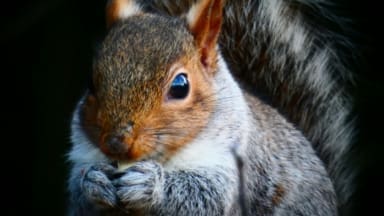
During a debate in the House of Lords on biosecurity, Charles Hay – the Earl of Kinnoull, expressed concerns over the impact of grey squirrels on broadleaf trees.
He said: “The biggest threat to our broadleaf woodlands is the grey squirrel. They ring-bark trees aged between 10 and 40 years, making them susceptible to a host of pathogens and thus killing many and damaging much, if not all, of the rest in affected plantings. This greatly reduces the yield and quality of the timber. This has resulted in many landowners and managers in England simply not planting the native broadleaf trees that are needed as a significant part of our net zero strategy.”
Grey squirrels, native to North America, were intentionally introduced to a number of sites in England and Ireland between 1876 and 1929. After establishing viable populations, they started to spread and cause problems. In 1937, a law was passed prohibiting their importation and keeping in Great Britain. They are now classed as a UK invasive non-native species (invasive alien species in the EU) due to their negative impacts.
Mammal Society estimates put their population at around 2.7 million individuals, although there is no definitive figure. They are now widely spread in large areas of England, Wales, the Scottish Lowlands, Northern Ireland and Ireland, where they tend to live at higher densities than the native red squirrel. They have serious negative impacts on red squirrel numbers (causing local extinctions) through competition and disease transmission, and bark strip trees causing major damage and tree fatalities.
Grey squirrels strip the bark from the main stem and branches of trees, typically beech and sycamore trees but they are known to damage a wide range of tree species, including oak, birch, larch, pines and Norway spruce. The bark wounds result in deformation, stain and decay of the timber and serious wounds can kill the tree. Squirrel damage has now become a serious disincentive to landowners trying to establish new woodland.
Hay highlighted the UK Squirrel Accord commissioned research (funded in part by Defra) into the fertility control of grey squirrels which offers an alternative non-lethal management method to manage population densities and support eradication efforts.
“Given the central need to deal with this issue, for net-zero reasons alone, I urge the Government to consider upping the resource that they devote to it. If we have a bit more resource now, we will make a better job of dealing with the squirrel”, added Hay.

